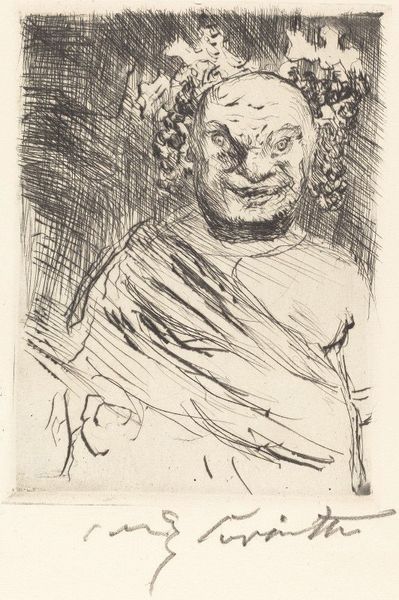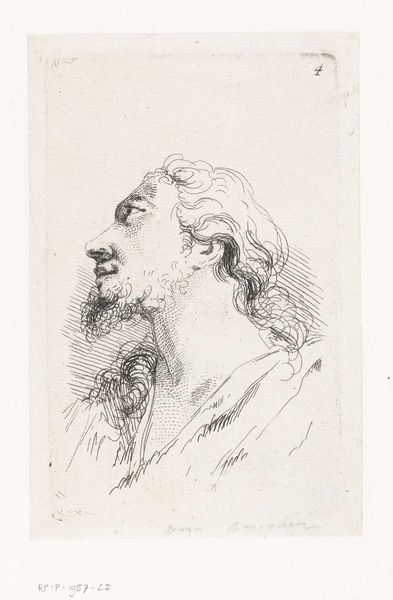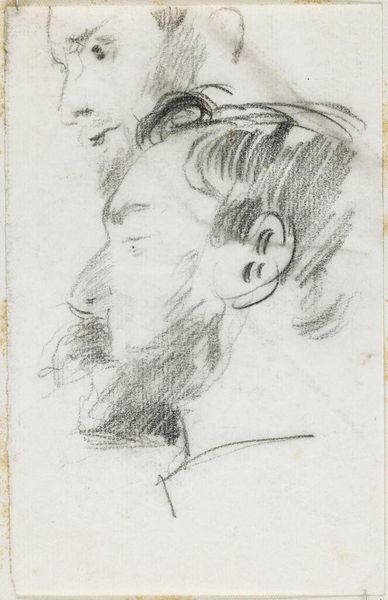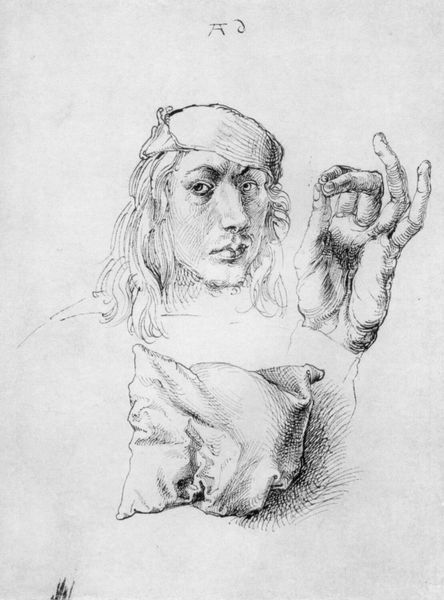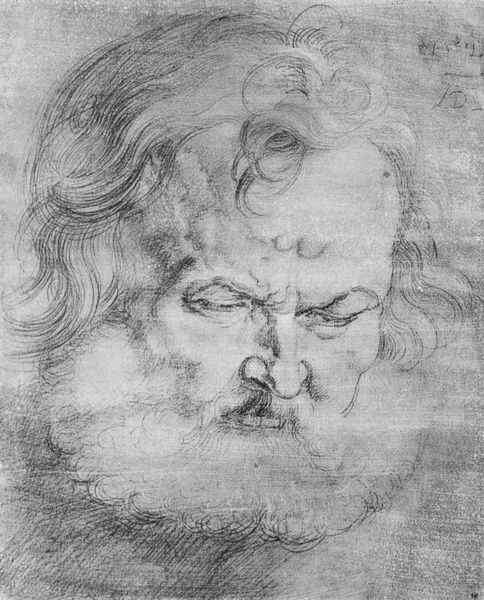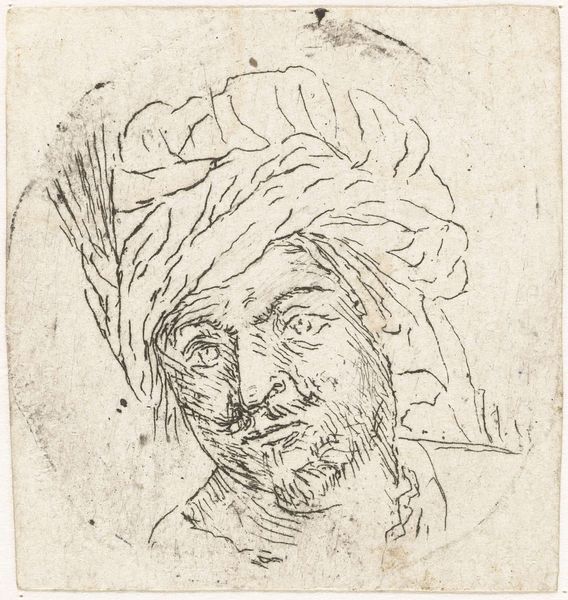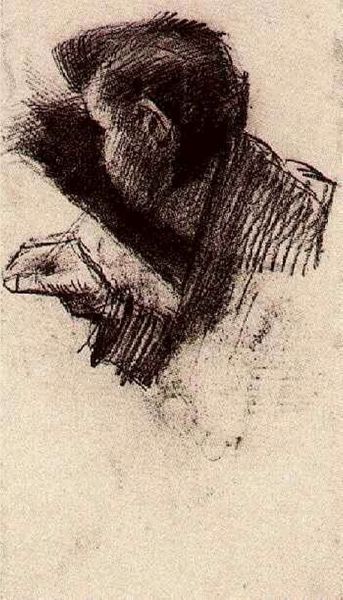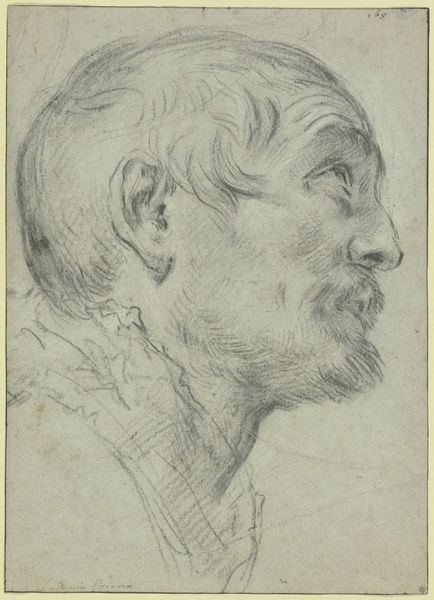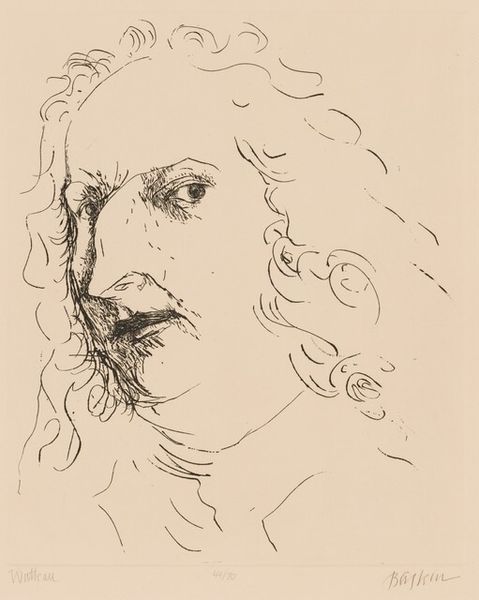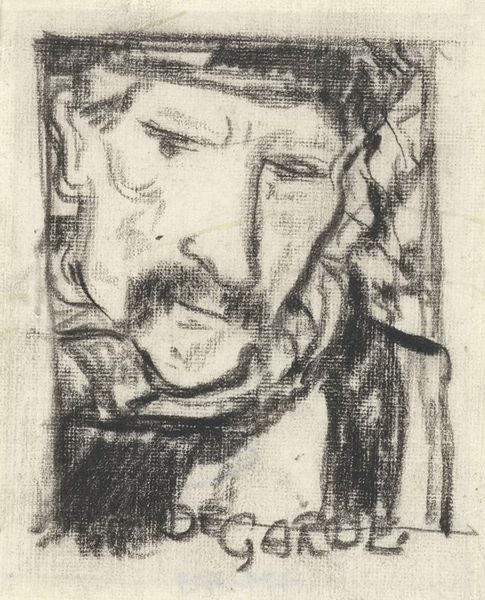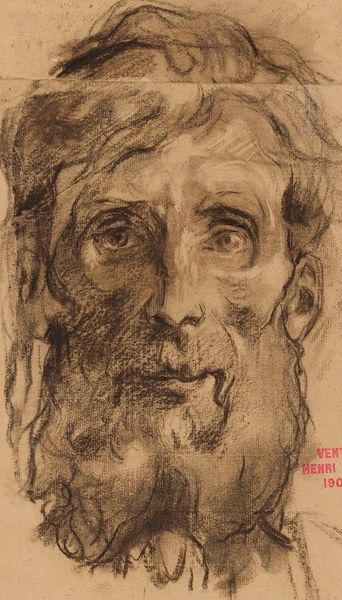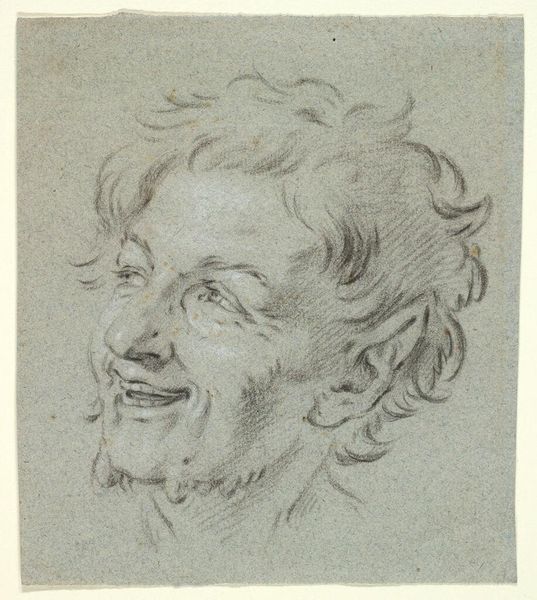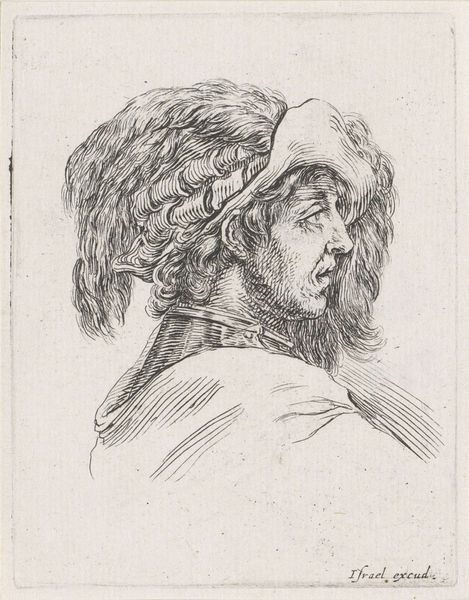
drawing, charcoal
#
portrait
#
pencil drawn
#
drawing
#
art-nouveau
#
self-portrait
#
pencil sketch
#
charcoal drawing
#
figuration
#
pencil drawing
#
sketch
#
expressionism
#
portrait drawing
#
charcoal
Copyright: Public domain
Editor: Here we have Theo van Doesburg’s "Old Faun (self portrait)" from 1909, created with charcoal and pencil. It’s quite striking – there's a vulnerability in the eyes, contrasting with the wild hair and beard. How do you interpret this work? Curator: The faun, deeply rooted in Greco-Roman mythology, embodies nature, wilderness, and untamed creativity. By presenting himself as a faun, Doesburg evokes a sense of primal energy. What visual cues connect him to this imagery for you? Editor: Well, definitely the wild, untamed quality of the hair and beard – it gives the impression of someone very connected to nature. The loose sketch style too, perhaps suggesting spontaneity and freedom. Curator: Precisely! And it speaks to something deeper, too. The Faun represents more than just nature; it can represent a kind of revolt against societal constraints, an embrace of instinct. Consider how expressionism at this time used the grotesque to undermine conventional expectations. Editor: That makes sense. I can see the expressionistic elements now – the exaggeration in the features, the raw emotionality… so the "old" faun… does it reflect a weariness with those ideals? Curator: Perhaps a contemplation on the aging artistic soul – wrestling with inspiration. Doesburg might be reflecting on his artistic journey and the inherent tensions within the creative spirit. How might you relate the ‘old’ faun to van Doesburg’s artistic self? Editor: So it’s not just a self-portrait, but an exploration of the artist’s inner world and struggle? I didn’t quite catch all those layers at first. Curator: These symbols open up many possibilities for us to interpret an image.
Comments
No comments
Be the first to comment and join the conversation on the ultimate creative platform.
